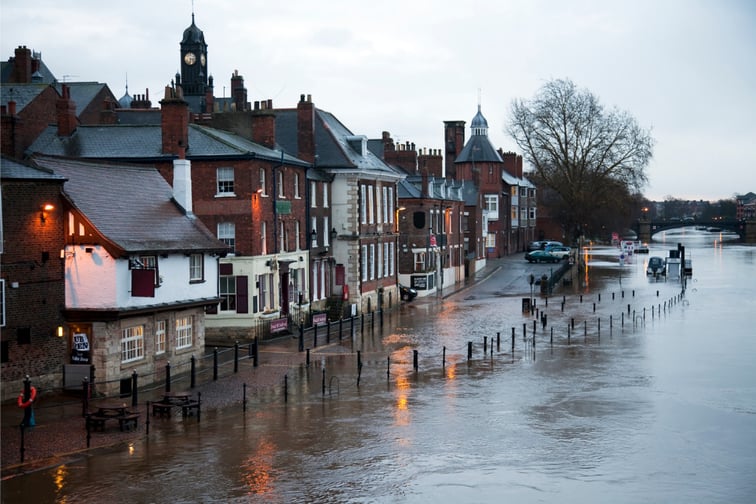

The cost of severe flooding in the UK is forecast to become much more expensive by 2050, according to JBA Risk Management. It estimated that the cost of a 200-year flood event can escalate to £5 billion, or 42% higher than at present, in case of an intermediate emissions scenario (RCP4.5).
JBA warned that, if there is no action to reduce emissions (RCP8.5), the UK could see a hike of up to 87% in average annual losses to residential properties. There could also be a 120% increase in the cost of surface water floods, particularly in the south and east of the UK.
These findings came after the launch of the latest version of JBA’s customisable UK Flood Model. The new version includes two new climate scenarios representing intermediate and unmitigated warming by 2050 and thousands of new future events, such as events of increased severity and spatial coverage.
The model also showed that river flooding is projected to remain the dominant risk from climate change, particularly in the western UK, but the greatest change in flood losses will come from coastal flooding – with a 150% increase under a no-action RCP8.5 scenario by 2050.
JBA said the updated model can help the insurance sector and wider financial industry understand how their portfolios will be impacted by flood risk under climate change. The output can influence decision-making, support portfolio and capital management, as well as contribute to future product development. Users can customise various parameters to see the specific impacts on their own books and losses and investigate “what if?” scenarios. The model was first launched in 2018.
“Our latest UK Flood Model has been developed using new methodology and the latest UK climate projections from the Met Office while building on practical learnings and client feedback from our 10 years of flood modelling experience,” said Judith Ellison, climate change commercial lead, JBA Risk Management. “The key element of the latest approach is the ability to build new and more severe events – with thousands of new events in total– to more effectively reflect the potential impacts from climate change and give users greater insight into the challenges of future risk.”
